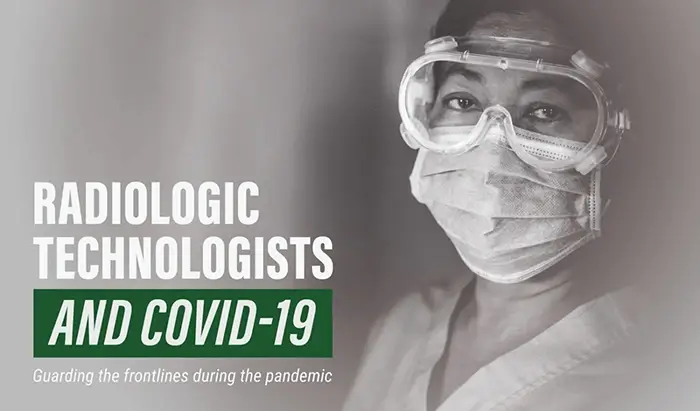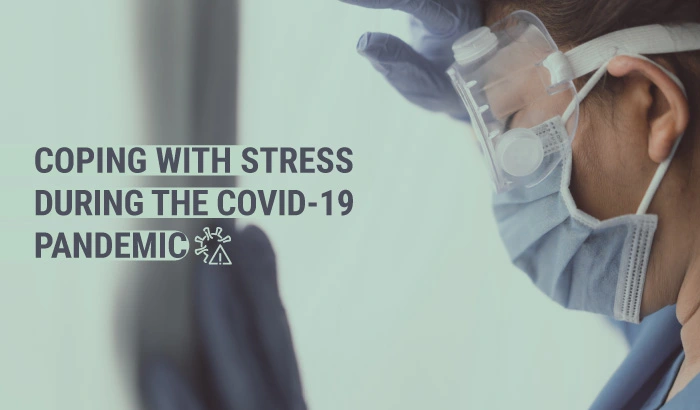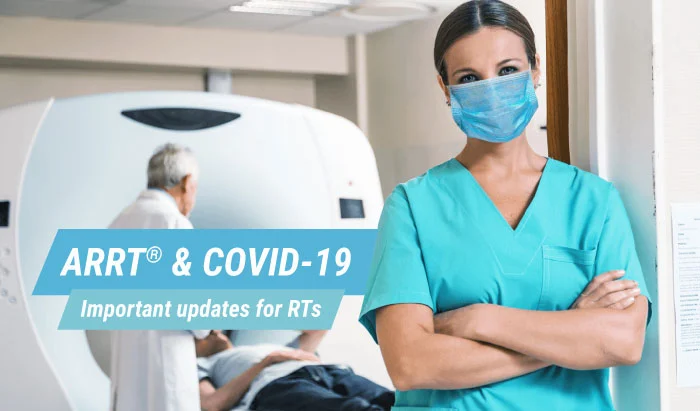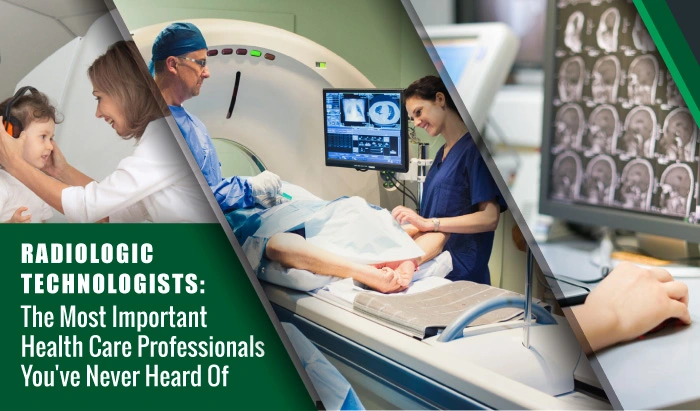Radiologic technologists: Guarding the Frontlines during COVID-19



There’s a line of patients waiting for you, and it’s not certain if one, some, or all are infected with COVID-19. But it is suspected that they have it. That’s why they’ve been sent to you. You have to touch them, position their bodies, be in close contact to get the images of their chests that will be used in diagnosis. What if the man who’s next in line has it? Or the woman waiting after him? What if you contract it? You think of your family at home. Of the patients you need to see in the hospital later. You wash your hands and put on fresh gloves. You replace your mask with a new one. You call in the next patient, whose clinical history is limited, and you position them for a chest x-ray or chest CT. You cross your fingers and hope that the images don’t come back showing the symptoms of the coronavirus, for the sake of the patient. For your own sake. But you know that even if the images don’t show the tell-tale signs, the patient could still have the virus. You hope anyway. And then you do it all over again for the next patient, and the next, and the next. You have to. You’re a radiologic technologist in the midst of a global pandemic.
The rapid spread of COVID-19 has meant chaos and confusion for healthcare systems and healthcare workers—with the availability of reliable testing kits varying, with many hospitals finding themselves overwhelmed with patients, with professional medical organizations, government bodies, and local healthcare facilities scrambling to establish effective protocols and procedures to limit the spread and identify positive cases. Best practices guidelines for identifying patients have emerged from several professional sources, but these depend heavily on the resources individual healthcare institutions can bring to bear on the potential caseload of suspected and confirmed COVID-19 patients. We know a little; a knowledge-base is emerging. But so much remains unknown, so much remains uncertain. And this is the environment in which many radiologic technologists (RTs) have found themselves working.
“The Department of Homeland Security has classified RTs as essential members of the critical infrastructure workforce of the US.”

And a recent analysis places RTs among the workgroups at highest risk for contracting COVID-19. And it’s no wonder. The men and women working as RTs have been, and remain on the frontlines of efforts to contain the spread of COVID-19 and treat those who have contracted the virus.
While the polymerase chain reaction (PCR) test or gene sequencing is required to confirm if a patient has COVID-19, those tests kits were not, and in some cases and many places still are not, readily or reliably available. These tests are also limited in accuracy. So medical communities in resource-constrained institutions began using chest x-rays and CT scans as supplemental diagnostic tools for COVID-19, effectively making radiologic technologists first responders. And that comes with great risk.
“RTs work in close physical proximity with patients, whose COVID-19 status ranges from unknown but suspected to confirmed.”
In a multinational consensus statement, the Fleischner Society put forth its recommendations for the use of medical imaging as a diagnostic tool for COVID-19, recommendations that highlight the risks RTs must take to serve patients and the community at large. The Fleischner Society recommends that medical imaging not be used for patients who are asymptomatic or present with mild symptoms, but rather it should be reserved for those who have COVID-19 and worsening respiratory symptoms and those with moderate to severe symptoms of the virus, whether or not their COVID-19 status has been confirmed by testing. The Fleischner Society acknowledges that RTs work in environments with wildly varying access to testing and other resources, and that in such cases, imaging is recommended for medical triage, or categorization, of patients who have moderate to severe symptoms and a high-probability of having the virus prior to being tested.
In other words, radiologic technologists are tasked with imaging patients who definitively have COVID-19 or who are very highly likely to have it. RTs are also exposed to unique risks, such as the fact that COVID-19 can survive for hours on the surfaces of the medical imaging equipment they use, further increasing their exposure to and likelihood of contracting the disease.
Under perfect conditions, the role radiologic technologists must play to provide care to patients is hazardous at best. But conditions are far, far from perfect.
With the initial rapid spread of the virus, demand for personal protective equipment (PPE), such as masks and gloves and gowns, far outstripped supplies. Now, with cases in the US surging again to record levels, demands for PPE are once again skyrocketing. In a recent article covering the PPE shortage, The Guardian reports that supply chains for PPE are fragile and the PPE supplies that do exist are being unevenly distributed between facilities, resulting in frontline healthcare workers being urged to reuse masks and gowns for up to week when they should be changed between interactions with each new patient, substantially increasing the likelihood of contracting the virus.
“So, maybe the radiologic technologist imaging the chest of a patient with a high likelihood of having COVID-19 has a fresh mask and gloves. Maybe they don’t.”

Maybe they are wearing the same mask they wore when they scanned the chest of the last patient, who was also suspected of having COVID-19, because they have no choice. And with increased risk of becoming infected, comes increased risk and fear of passing the virus on to vulnerable patients and loved ones, the emotional and psychological weight of which cannot be overstated.
With the number of COVID-19 cases in the US rapidly increasing, RTs will likely remain on the frontlines for a great deal longer. They will continue to work in hazardous conditions that are taxing physically, mentally, and emotionally, to provide care to those infected and to support the identification of new cases. Or, put another, perhaps more accurate and truthful way, RTs will continue to protect the frontlines during this pandemic, to safeguard their communities against further suffering and loss of life, at great personal risk. Here’s to radiologic technologists.



